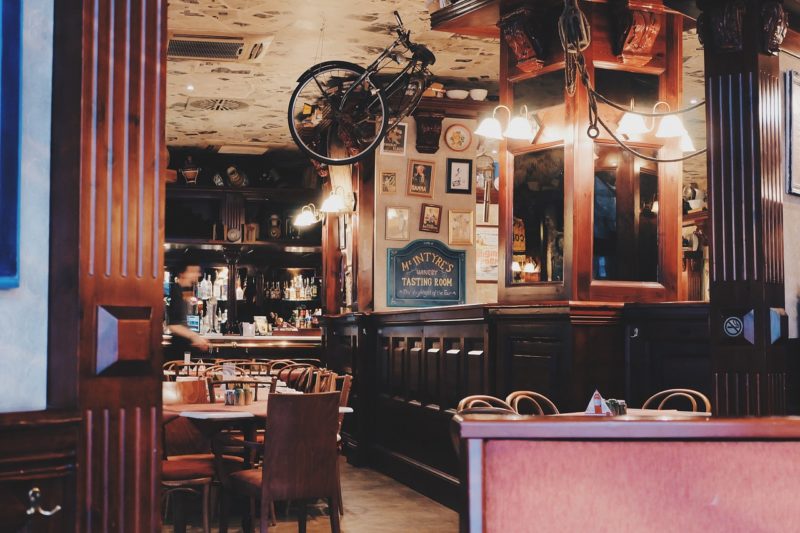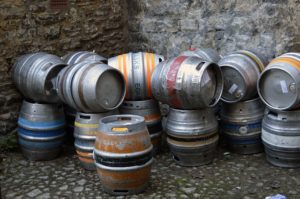Hospitality and leisure
Health & safety in hospitality: The most common accidents
Those who are employed in hospitality and leisure will know what a tiring sector it can be to work in. Whether public-facing or not, it can be very hands-on, often with long hours in faced-paced environments. To some extent, under such circumstances, the odd bump or bruise might be expected. However, if those accidents are caused by employer’s failing to keep staff safe, it’s not something you should be tolerated.

The HSE states that the accommodation and food services sector has a lower statistically significant amount of work-related illness, but a higher statistically significant work accident rate. Approximately 434,000 injuries caused up to seven days of absence in each case in 2016/17 alone, it said. A further 175,000 caused a period of absence over seven days.
So, what is causing this higher than average injury-rate? According to Boutique Hotelier, the most common injuries in the hospitality sector are slips, trips and falls.
The most common cause of non-fatal injuries, 29%, fall under this category. This is hardly surprising, given the environment, with most hospitality venues serving drinks, the likelihood of spillages is high, in addition to regular deliveries, leading to increased chances of trip hazards. The problem arises when the spills and trip hazards aren’t addresses immediately, turning the risk into a cause.
This is when an accident becomes a work accident, as a failure to follow or implement a process (i.e. the workplace is at fault for not having a necessary routine to address the spill or trip hazard before an accident materialised).
Prevention:
 Key elements of prevention of slips, trips and falls include:
Key elements of prevention of slips, trips and falls include:
- Signs for slippery areas;
- Danger tape to highlight any potential trip hazards, such as steps or uneven flooring;
- Non-slip footwear;
- Signs to signal any recent spills;
- Adequate lighting;
- A process in place that has spills tended to immediately.
Lifting/handling accidents account to 22% of all non-fatal injuries. These injuries tend to revolve around muscle strains. Back pain, neck pain, arm pain, and leg pain can all result of a lifting or handling injury and usually occur over a stretch of time where workers are frequently handling heavy goods. However, it’s also possible for injuries to occur from a one-off heavy item lifting situation. Workplace’s are recommended to provide training for handling heavy goods, as well as relevant lifting apparatus where needed.
Prevention:
Employees are often the best eyes and ears for potential risks!
Prevention of lifting/handling injuries include:
- Training on how to lift heavy goods;
- Using apparatus to help lifting, where available
- Have a system in place for employees to report instances where they feel lifting equipment should be in place for a task.
Struck by an object
Being struck by an object accounts for 10% of hospitality workplace injuries. Such injuries can cause a varying degree of problems, from minor cuts and bruises to more serious results like concussion or even blindness.
Items falling from a high shelf, moving loads with machinery, and dropping tools are all common causes of these accidents.
 Prevention:
Prevention:
- Make sure that any objects that aren’t on ground level are secure; Be sure that these items won’t be easily knocked. Heavier items should be stored near the ground, and lighter items higher up. Self-standing items should be secured or stable;
- When using machinery to move loads, such as when operating a pallet truck or trolley, stick to designated routes;
- Avoid working or moving under a moving load;
- Inspect lifting apparatus to ensure everything is working.
At 7% of all non-fatal workplace accidents, falling from a height covers falling from ladders and scaffolding, or any other structure or platform that isn’t at floor-level. Although falling from a height is the fourth most common non-fatal work accident, they are the third highest contributor to fatal injuries, at 20%.
Health and Safety Executive conducted a study within the food and drinks sector of 150 falls from height. The most common places to fall from where ladders (40%), vehicles (17%), machinery (10%), platforms (10%), stairs (8%), roof (7%), scaffold (4%), warehouse racking (4%).
Prevention:
- Where possible, control points and work should be designed to take place on ground level where possible;
- Permanent safety features should be installed if working at a height is frequent, such as steps or railings;
- Minimise the risk of falling from a ladder climbing slowly, and avoid sudden movements;
- Ensure the type of ladder or scaffolding is correct for the job at hand;
- Do not overreach when on a ladder or scaffolding.
Acts of violence
Accidents which occur as a result of violence account to 7% of accidents at work. Generally, employees who deal with face-to-face roles are at risk of violence, from customers or even other employees.
The injury caused by acts of violence can vary wildly, but that doesn’t mean they cannot be prevented.
Prevention:
- Regular staff meetings can be effective in highlighting problems faced day-to-day at work;
- Detailed records of previous incidents will help to identify patterns, causes, and areas of concern;
- Physical security measures, such as CCTV and security locks;
- Wider counters can help protect staff in customer-facing roles.
Accidents happen, it’s a fact of life. But a workplace should have measures in place to reduce the risk as much as feasible possible to protect its employees. There has been a downward trend in self-reported workplace non-fatal injuries in the lead up to 2010/11, but it hasn’t risen or dropped significantly in recent years. With the right prevention methods, these common workplace accidents can hopefully be prevented enough to see another decrease.
Sources:
Health & safety in hospitality: The most common accidents
What is causing a higher than average injury-rate within the hospitality and leisure sector and how can accidents be prevented?
Safety & Health Practitioner
SHP - Health and Safety News, Legislation, PPE, CPD and Resources Related Topics
Farming company fined £320k after a man died from fall
Roofing firm fined total of £880k after two workers injured
Protecting health workers is a complex challenge, but emerging strategies show promise


 Key elements of prevention of slips, trips and falls include:
Key elements of prevention of slips, trips and falls include: Prevention:
Prevention: